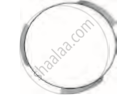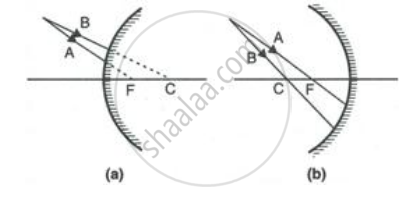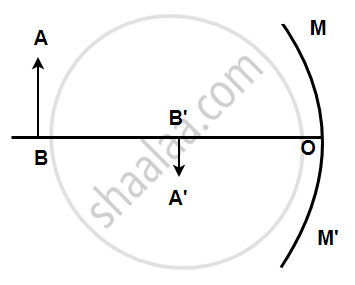Advertisements
Advertisements
Question
Write the formula for a lens connecting image distance (v), object distance (u) and the focal length (f). How does the lens formula differ from the mirror formula?
Solution
Lens formula is:
`1/v-1/u=1/f`
Now, the mirror formula is given by:
`1/v+1/u=1/f`
In both the formulas,
u = Object distance
v = Image distance
f = Focal length
In mirror formula, positive sign is present between the reciprocals of image distance and object distance .
In lens formula, negative sign is present between the reciprocals of image distance and object distance.
APPEARS IN
RELATED QUESTIONS
Name the two types of spherical mirrors. What type of mirror is represented by the:
front side of a shining steel spoon?
The diverging lens in part (a) is replaced by a converging lens also of focal length 100 mm. The object remains in the same position and an image is formed by the converging lens. Compare two properties of this image with those of the image formed by the diverging lens in part (a).
A concave lens produces an image 20 cm from the lens of an object placed 30 cm from the lens. The focal length of the lens is:
(a) 50 cm
(b) 40 cm
(c) 60 cm
(d) 30 cm
Three mirrors are created from a single sphere. Which of the following - pole, centre of curvature, radius of curvature, principal axis - will be common to them and which will not be common?

Complete the following diagrams shown in Fig. by drawing the reflected ray for each of the incident ray A and B.

Name the mirror which always produces an erect and virtual image. How is the size of image related to the size of object?
Upto what maximum distance from a concave mirror, the image can be obtained? What will be the location of object for it?
Answer the following question.
Write the modification in the curvature of the eye lens which enables us to see the nearby objects clearly?
AB is the object, A'B' is the image, and MM' is the position of the mirror. Complete the ray diagram showing the formation of the image and find the focal length of the mirror.

